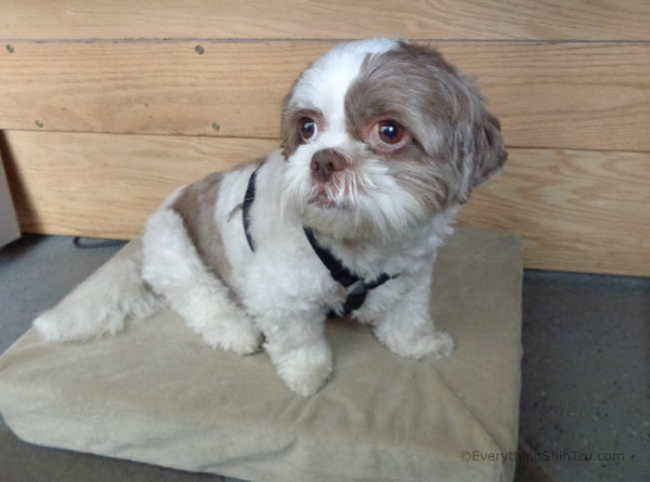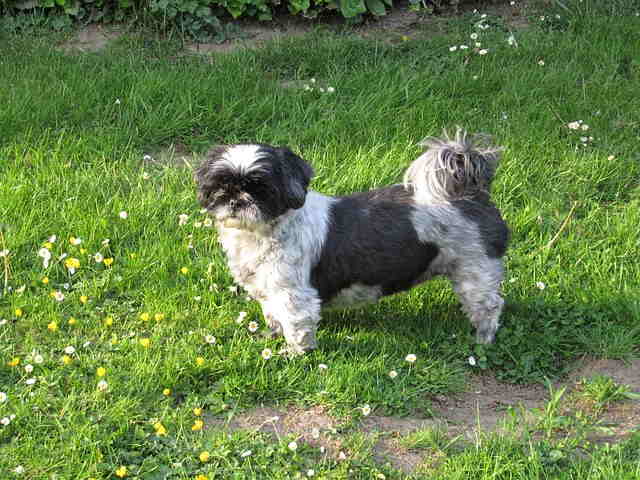What You Need to Know About Flying with Your Shih Tzu Dog
BY MOLLY | EVERYTHINGSHIHTZU.COM
This post may contain affiliate links. Read privacy & disclosure policy for info
Recently we published a post with tips for traveling with dogs on the road. But, sometimes driving is not the best option for us when we need to get somewhere.
Sometimes we need to take to the skies.
And when we travel by air, it is hard to think about leaving our canine friends behind when we can take them with us.
If you have a flight coming up and are considering bringing your dog, there are a few things you should know. And with a little preparation, your dog will be ready to enjoy her flight!
Read on to learn how to prepare for take-off.
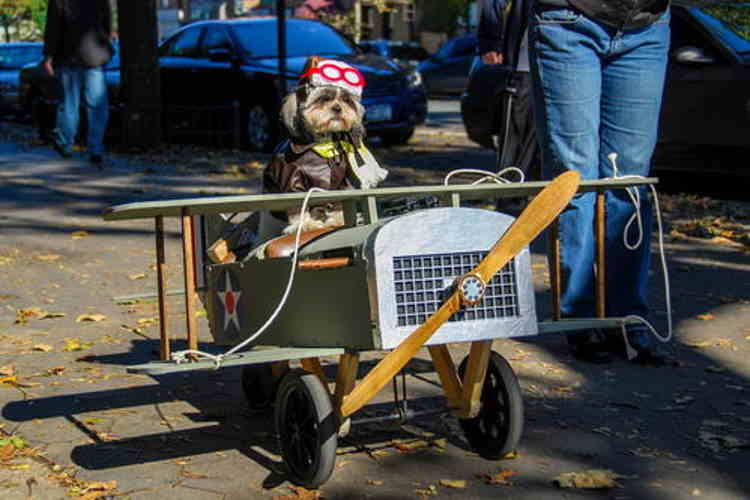 Flying with dogs
Flying with dogsPreparing your dog for the flight
Everything about flying is far beyond your dog’s conceivable imagination. And not just the concept of flying itself, but what all surrounds it.
The car travel to the airport, the hustle and bustle and crowds in the airport, the possibility of separation from you if she’s going to travel in the cargo area. . . it can all be stressful for an unprepared dog!
It isn't recommended that your Shih Tzu fly in the cargo area whereas this can cause breathing difficulties. It's much safer to have them fly in the cabin with you.
Start getting your dog ready for her flight weeks in advance. The first step is to acquaint her with traveling in a crate or pet carrier.
Preparing your dog for the crate
If your dog is not used to remaining in a crate for an extended period of time, you should start training her.
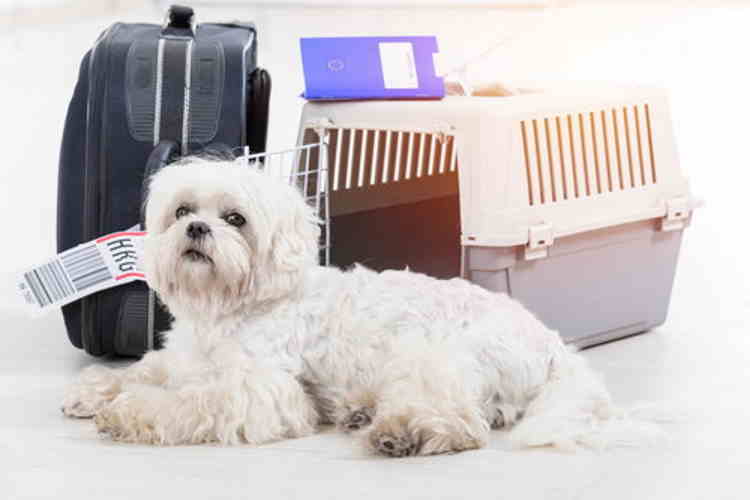 Flying with dogs-preparing for the crate
Flying with dogs-preparing for the crateFind a travel crate, that is perfect for your dog’s size. She will need room in this to stand up and move around or stretch.
I recommend a crate from Sherpa Pet Carriers for their "Guaranteed On Board" program which guarantees your carrier will be accepted on board the airline or they will reimburse you for your tickets.
Their travel crates are well made, come in a variety of colors and even have wheels, which makes it easier to transport through the airports.
When crate training your dog, you should follow these steps:
- Reward crate time with food or treats.
- Use positive tones and communication when introducing your dog to the crate.
- Do not use a crate for punishment. It will be more difficult to develop reward-behavior if your dog is afraid of the crate.
- Increase time increments in the crate.
- Try crating overnight once you feel your dog can handle it.
Once your dog is familiar with the crate, you should find that she is a lot more relaxed in the airport and on the plane.
Flying with small dogs
We love all dogs here at Everything Shih Tzu and we do our best to provide helpful information for dog owners of all sorts of breeds.
But, as our name suggests, we specialize in the Shih Tzu dog!
Flying with a Shih Tzu or another small breed is different than flying with larger breeds.
Smaller dogs may be allowed to fly in the cabin with you, but they will have to remain in their crate -- so, make sure your dog is crate trained, as we mentioned in the previous section.
This rule depends on the airline, but usually, if the dog’s crate can fit under the seat in front of you, then she can travel in the cabin.
If you want to fly with your dog in the cabin, ask your airline about its regulations and about the dimensions allowed for the size of the crate.
For example, United’s maximum crate size allowed in the cabin is 18 inches X 11 inches X 11 inches.
Book your dog’s spot in advance. If you plan on bringing your dog with you in the cabin, you need to communicate with your airline before your flight.
The airline may charge a fee for having your dog in the cabin or may have other details about flying with your dog to confirm with you.
If your dog is not a small breed and cannot travel in the cabin with you, then you need to be sure she is prepared for a period of separation.
The cargo can be a stressful environment if your dog is not comfortable with separation!
Many airlines will not allow a Shih Tzu, or other brachycephalic breeds, to fly in the cargo area due to their breathing difficulties.
Helping your dog cope with separation anxiety
Separation anxiety is a condition in which your dog grows nervous and behaves erratically when you are away.
Not all dogs have separation anxiety as a regular condition, but it is possible your dog can grow anxious in the airplane when separated in a crate in a cargo bay.
If your dog has severe separation anxiety issues, you should seek professional advice. Your dog’s vet or professional trainer can help determine the best course of action for flying with your dog.
For dogs with little or no separation anxiety, you can be proactive in helping them overcome or avoid separation-related stress.
Reward their time spent away from you.
In our post about communicating with dogs, we mentioned the importance of reinforcing good behavior with reward.
Dogs can react to separation anxiety with a multitude of negative behaviors, such as urinating in the house, excessive barking, destroying household goods, and pacing or looking for an escape.
When you are separate from your dog, you can turn the situation into a rewarding one instead of a nerve-racking one.
Give your dog a bone, a toy, or something else that she loves to keep her occupied. KONG balls are a great choice because you can stuff them with peanut butter or any treat your dog will enjoy.
This can keep them occupied for a long time.
It is important that your dog sees this treat or toy as a reward for separation time, so when you are with them you should keep this object out of your dog’s sight and mind. They will come to associate the object with reward and develop good behavior when being apart from you.
Now, on to final preparations!
Making final preparations before boarding
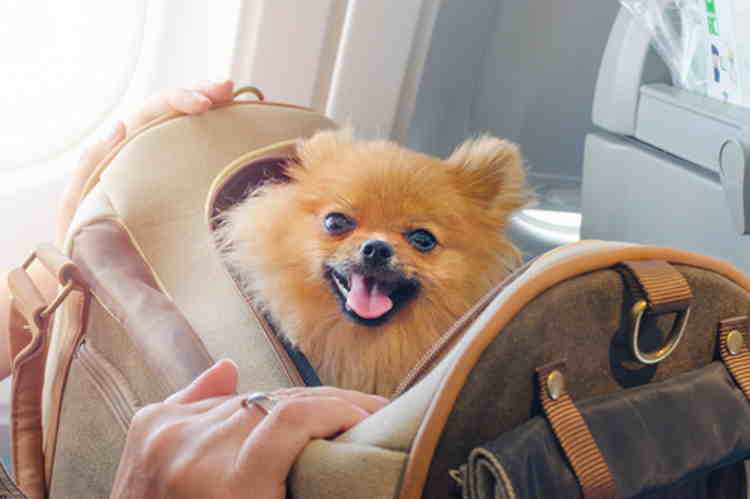 Flying with dogs - Know the airline rules and regs
Flying with dogs - Know the airline rules and regsDuring the day of your flight, you should take some final measures in preparing your dog for flying:
- Do not feed your dog solid food six hours before the flight. A little water is okay, but solid food can cause your dog to sick up mid-flight.
- Write your contact information on the crate. Your dog should already have up-to-date tags on her collar, but marking the crate helps in identification.
- Let your dog run and play beforehand. Dogs have a lot of energy! Help them from getting restless during their time in the crate. Let them run and play and get their energy out!
- Take your dog out to potty right before the flight. This one is pretty self-explanatory. If your dog is in a crate and has to go to the bathroom, she has nowhere else to go. Help keep her from creating a mess and traveling in filth by taking her to go potty before boarding.
Once your dog is crate trained and prepared for separation, she should be more equipped for her flight!
Additional tips for flying with dogs
You are almost ready to take your furry best friend on a flight! Pay attention to the following advice and you and your dog will be ready to fly:
- Check which airlines are compatible with pet travel.
- Most airlines require your companion to have a medical certificate issued within 10 days of the flight, stating he is in healthy for traveling on the airline. This certifies that your pup isn't a health risk to other canine and human passengers. Talk to your veterinarian about getting this certificate.
- Reserve your dog’s spot in advance. We mentioned before about doing this for in-cabin flights. But, you need to reserve your dog’s spot in the cargo as well if she’s too big to fly in the cabin.
- Follow up with instructions on when and where to drop off your dog if traveling in the cargo area. This may be a different time than checking bags or passenger boarding.
- Try your best to book a direct flight. Minimize your dog's stress by eliminating all the extra steps associated with connecting flights.
- Check international pet rules. Any time you are flying out of the country (or to Hawaii) you need to check the rules for bringing in pets. Some countries require specific vaccinations or a quarantine period.
- Provide additional comfort for your dog. You should line the floor of your dog’s crate with a soft bed or padding for comfort. Also, try using a Thundershirt on your dog to give her more peace of mind!
- Do not medicate your dog without a prescription. If your veterinarian recommends medication then it is okay, but do not take the diagnosis into your own hands. Doing this could be harmful to your dog.
With all this preparation, your dog should now be ready to fly with you.
Need some information? The Department of Transportation article on Traveling with Animals is a great resource to prepare for flying with pets.
Keep in mind, crate training and separation training takes a little patience from you and your dog, but the outcome is worth it!
Happy flying!
